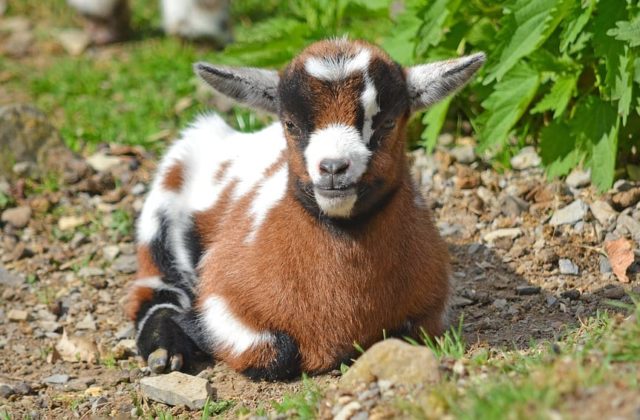

Due to their typically thicker coats, goats require close examination to reveal potential ailments and injuries that you may not notice through a cursory observation. By paying regular attention to the herd, you may see some subtle cues in the event that something is amiss. A sick, injured, or otherwise distressed goat may:
– Hide more often than they used to
– Change their daily schedule or general behavior
– Have labored breathing, coughing, sneezing, nasal discharge, or a constantly open mouth
– Have foam around their nose or mouth
– Be immobile, inactive or unresponsive to your approach
– Be stretched out in order to relieve bloat.
– Be sitting far more often than usual
– Avoid or be rejected by the rest of the herd
– Be stamping their feet
– Grind their teeth frequently
– Have a limp in their step
– Have unusual or abnormal droppings including diarrhea, blood in stool, or worms
– Be less hungry or thirsty, or drink water excessively
– Have an odd posture like hunching over or avoiding putting weight on one of their legs
– Have a bulge or non-uniform abdomen
– Have an abnormally strong odor
– Have an internal body temperature not in the range of 101.5-103.5 degrees Fahrenheit (though be aware that a goat’s temperature can fluctuate quite a bit especially when it’s warm out, so it’s a good idea to compare a goat’s temperature to a healthy, similarly active member of their herd)
– Have pale skin, mucous membranes or swollen jaw.
– Have unusual abscesses on their body or in their mouths (potentially signifying a serious infectious condition called Caseous Lymphadenitis)
– Be reluctant or averse to urinating or urinating frequently, or strain while attempting to urinate
– Repeatedly kick at their belly
– Lay down and then immediately get back up over and over as if they cannot get comfortable
– Stand or lay down with an extended neck
– Vocalize excessively
– Stand with their head pressed against a wall or gate (head pressing)
– Have weakness in their back legs or walk in circles
– Have food material packed in their cheek (cud packing) or drop/ spill cud as they chew
 Contact Jaguza Support
Contact Jaguza Support